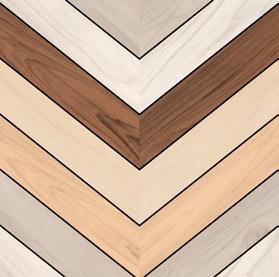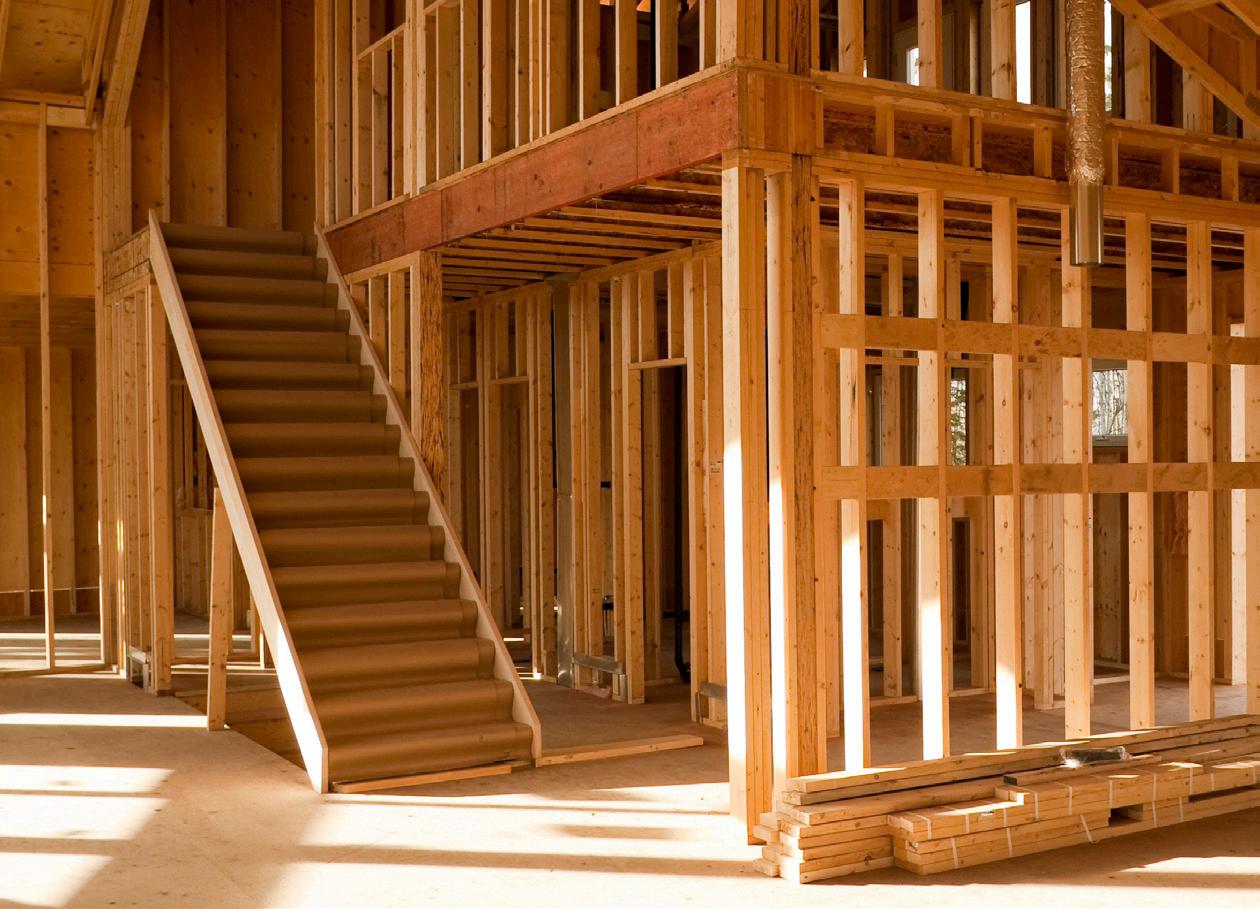


Tony Weick | President, Bell Bank Mortgage
IS THE MORTGAGE INDUSTRY FINALLY TURNING THE CORNER?
As we look ahead to the rest of 2025 for the mortgage industry, it’s important to look back at what has occurred over the past 12 months to understand where we are today and where we may be going. Entering 2024, the industry was anticipating change in a variety of ways, but unfortunately, anyone who thought change would start early in the year was certainly disappointed.
When 2024 began, the Federal Reserve’s tightening efforts of the previous 12 months had led to a slowdown of an overheated U.S. economy. However, markets remained resilient and inflation remained stubborn, and as a result, mortgage rates stayed higher for most of the year. We also experienced significant volatility with several fits and starts – there were multiple times when we believed markets were “turning the corner,” but whenever that happened, things quickly reversed course.
Eventually, economic data began to show sufficient cooling for the Fed to start cutting rates in September. Unfortunately for the mortgage sector, the markets had already priced in rate cuts going into fall. Following the Fed’s first rate cut, mortgage rates actually increased. Through the fourth quarter,
which included two more rate cuts in November and December, as well as the results of the U.S. presidential election, we are still seeing market volatility – and expect this to continue for some time.
Looking Ahead
So, now that we’ve covered 2024, what can we expect in 2025? Is there any clarity in what the markets may do next? On one hand, we definitely had some questions answered last year, particularly with respect to when the Fed would start cutting rates and who would win the election. However, the answers to those questions may have just led to additional uncertainties for the months ahead.
Interest Rates
Starting with the Fed funds rate, the markets continue to evaluate a variety of factors that will impact the speed and number of future rate cuts. As recently as this fall, many economists were still predicting up to six additional rate cuts in 2025. In recent weeks, however, those predictions have pulled back, with some now only calling for a couple more cuts. Time will tell.
As we know, the Fed funds rate isn’t directly tied to mortgage rates, but they do tend to move in similar directions. If you recall last year’s article, we had
expected mortgage rates to drop into the low-6% range by the end of 2024, but that didn’t happen. Instead, due to the factors mentioned earlier, rates stayed higher, bouncing between the mid-6% and high-7% range at different points in the year. Moving into 2025, we’ll likely see a continuation of this trend. We believe rates will moderately decrease throughout the year, starting in the high-6%/low-7% range and progressing down to around mid-6% in the second half the year.
Additionally, like I mentioned earlier, markets and mortgage rates will likely experience ongoing volatility driven by economic data and national developments, and this may be the norm for the foreseeable future. Don’t be surprised if rates fluctuate by .25%-.50% above or below the averages at different points in 2025.
Affordability, Housing Inventory and Values
Now, let’s look at homeownership affordability and what we may see in 2025. A key aspect of affordability is, of course, housing values – the cost of a home. A key component to what drives property values is the available inventory – or how many homes are listed for sale at any given time. In recent years, there has been a severe shortage of available inventory, a trend that was amplified during and following the pandemic. This has occurred for a number of reasons, including:
• Low levels of new construction: Over the past decade, new construction activity has lagged where many people believe it needs to produce.
• Institutional ownership: During the same timeframe, many single-family housing units have been acquired by large institutions or even hedge funds and turned into rental properties.
• The “handcuff” factor: The majority of current homeowners with financing have rates in the 3%-4% range, far below current levels. This is keeping many homeowners from selling due to the potential impact on their housing payments.
In the past year, we’ve started to note some positive changes, with many markets across the country
seeing 10%-20% year-over-year increases in homes for sale – although it’s important to remember that we were coming off very low levels the year before. (Different markets, as well as different price ranges, will vary within these statistics, as real estate is definitely market specific.) This increased availability is a welcome change for homebuyers, but we still remain under-supplied in nearly all categories relative to what is considered a healthy balance.
We believe this positive inventory trend will continue in 2025 – albeit slowly. Every month, more and more properties “turn over,” resulting in fewer homeowners being handcuffed to their very low mortgage rates. Whether it’s someone looking to refinance and pull equity out of their home or just the reality of life happening (such as people tying the knot, having a baby, relocating or downsizing), more homeowners will move, resulting in fewer properties being tied down.
As for affordability, not only do property values and interest rates matter, but now more than ever, real estate taxes and insurance – things that used to be an afterthought – also have major impacts on payment levels. These have always been part of homeowners’ monthly obligations, but recent increases, especially in insurance, have added to rising costs that households need to budget for. As mortgage rates start to moderate and inventory builds its way back, we should see a slowing of home price appreciation. As that happens, things will begin to improve for homeowners and homebuyers after a challenging couple of years.
One final note on affordability: many homebuyers still mistakenly believe it takes a 20% down payment to buy a home. This is not the case, and there are a number of local, state and national programs designed to help with the cost of down payments. Recently, there’s been an increased industry commitment to making sure homebuyers understand some of the available options. From lenders to secondary market investors to city and state administration, many around the industry are working to develop and market programs to help qualified applicants overcome affordability challenges.

Moving Forward
After a third straight year littered with negative headlines and limited activity, the mortgage and real estate industries have confidence that we are finally beginning to turn the corner. Here’s why:
• Mortgage rates are expected to gradually decrease, which will not only spur overall activity, but provide opportunities for people to pull equity out of their home or reduce their monthly payments by refinancing.
• The amount of quality housing inventory available for sale will continue to rise throughout 2025, which, combined with a level of pent-up demand, will drive an increase in purchase opportunities and activity for buyers.
• As a result of that increase in inventory, price appreciation is forecast to remain in the 4%-5% range, a much more stable and affordable level than in previous years.
• The progression of mortgage financing options will provide new solutions and opportunities for potential homebuyers, helping them overcome the affordability challenges that can limit homebuying today.
Interested in Buying a Home or Refinancing in 2025? We Can Help!
Using good old-fashioned professionalism, competitiveness and customer service, we expect great things for Bell Bank Mortgage and our business partners and clients in 2025. If you’re thinking about building or buying a new home, or considering refinancing alternatives, we’d love the opportunity to help you determine what’s in your best interests. As always, we welcome your business and referrals and would be honored to serve you.

WHAT’S NEW IN INTERIOR DESIGN IN 2025
During the winter months, when the weather is cooler and the days are shorter, many of us find ourselves spending more time indoors in our home. And as we spend more time in our living spaces, it’s not surprising that we may notice changes we’d like to make.
For those reasons, winter can be a great time to freshen up our homes by adding a new coat of paint, rearranging or replacing furniture, or adding new design elements. If you’d like to make updates to your living spaces and are looking for inspiration, here’s what’s new in interior design for 2025.

Other Trends to Know
Color of the Year
Every December, global color specialist Pantone announces a shade for the coming year that “captures the global zeitgeist” and “expresses a global mood.” Pantone’s selection for the 2025 Color of the Year was Mocha Mousse, “an evocative rich brown infused with sensorial warmth,” according to Pantone’s website. The shade can stand alone, Pantone explains, or serve as a versatile foundation to be paired with and enhance a wide range of palettes. Whether in combination with other colors or on its own, incorporating Mocha Mousse into your home’s spaces could add a sense of comfort and relaxation.
Here are other popular design trends and ideas, according to home makeover website Houzz.




A Warm Feeling: Building off of the selection of Mocha Mousse – and continuing a trend we mentioned last year – Houzz says warmth in general is a trendy design theme. Think earthy tones and wood elements, rather than the whites and grays that have been more common in recent years.
Please Do Touch: Tactile textures will be big in 2025, Houzz predicts. Tweed, corduroy and velvet are becoming popular furniture choices, while woven and mesh materials are being used to add detail and interest to cabinets, according to Houzz. If you’re interested in incorporating more textures, you could start by buying a fuzzy pillow for your couch or a soft, plush rug for the floor as a simple way to add character to a room.
More is More: Houzz says that maximalism, or “cluttercore,” is increasing in popularity. “This design approach celebrates abundance and allows homeowners to furnish their homes with pieces that reflect their personalities,” explains Houzz. On a practical level, you could experiment by adding different colors, materials, patterns and decorations into a living space, and go with what feels right to you.

DOES YOUR HOME SWEET HOME NO LONGER FIT?
As a homeowner, there may come a time when you feel that your home no longer fits your needs. Even if the home felt right at the time you bought it, your life may have changed – due to a growing family, a new job, or just the desire for more space – and that means your housing needs changed too.
When your home no longer fits your family or your lifestyle, you can either look for a new house that does, or remodel your current home to make it a better fit. Here’s how we can help with either choice.
Moving On Up
For homeowners looking to buy a new home that better fits your needs, a challenge you might encounter is how to balance the purchase of your new home with the sale of your current one. Because the timelines don’t always line up exactly right, one option is to make an offer that’s contingent on the successful sale of your current
home. The only issue, however, is that sellers won’t always consider such an offer.
Instead, we can work with you to put together a noncontingent offer so that you don’t miss out on the home you really want. Here’s how we can help:
1
2
We have programs that let you reduce your principal payment by “recasting” your loan.
During the recast* process, our in-house mortgage servicing team can help you figure out monthly payments that work with your goals.
3 If you want to reduce your principal to remove private mortgage insurance, we can help with that too!
4
We also offer short-term bridge loans to ease your transition between homes. (Not available in all markets.)
*Cancelling PMI is a separate process and not required for a recast. Only available on Bell Bank serviced Portfolio, FNMA, FHLB, Freddie Mac and Jumbo loans (FHA, VA, USDA, FHLB or GNMA are not allowed). Continue to make payments until the new principal and interest payments go into effect. Other restrictions may apply. There is additional paperwork that will need to be completed and signed, there is a certain turnaround time and is not immediate. The written request, fee and principal reduction payment are due at the same time in order to proceed.
Make Your Current Home Work Instead
Or, rather than going through the process of moving, maybe it’d be easier for you to make your current home work for your needs. Revamping your home can be a great option to stay where you are and update your space to better fit your family or your lifestyle.
No matter the size of your remodel or renovation, we can help walk you through the steps and tailor a program to meet your project’s requirements. Contact me to learn more!

$1,000
If you’re considering refinancing your mortgage, you could get up to $1,000** when you work with Bell! Get a $500* lender credit when you refinance with us, plus an additional $500** when you switch to America’s Best Checking!™
This offer is only available for a limited time, so let’s chat soon to make this your season of savings. Contact me today to get started!
